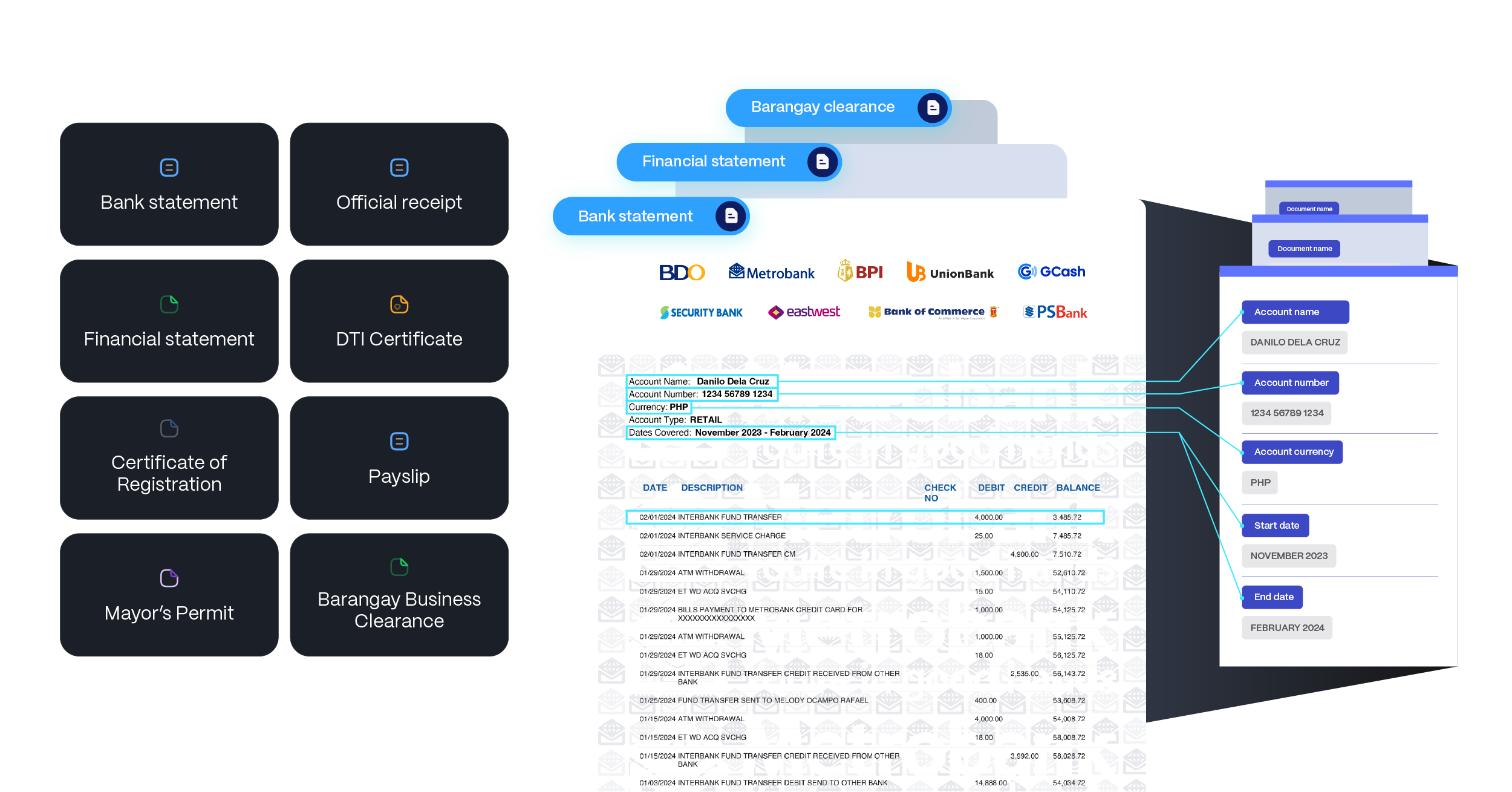All the Questions You Should Ask Before Choosing a New IDP System

Are you thinking of changing your Intelligent Document Processing system?
Consider the frustration of managing receipts and invoices. Traditional methods might involve manually entering data into spreadsheets, a process prone to errors and time-consuming. While you might have an existing IDP system, is it efficient enough to handle your current needs?
Just like a new accounting software streamlines financial management, a modern IDP can revolutionize document processing. Leveraging AI, IDP automates data extraction, classification, and routing, saving you valuable time and minimizing errors.
But with the ever-evolving technology landscape, choosing the right IDP can be challenging.
This blog post serves as your essential checklist, outlining the key questions you should ask before implementing a new IDP system. By understanding your needs and evaluating IDP options against this criteria, you can find a solution that optimizes your document processing and unlocks hidden efficiencies within your organization.
Checklist
Can the system accurately capture and recognize data from various document types (invoices, contracts, applications, etc.) regardless of format (scanned images, PDFs, etc.)?
Accurate data capture is crucial to avoid errors that could lead to financial discrepancies or operational inefficiencies. For example, a healthcare provider may use various forms and reports. An IDP system that can handle diverse formats like scanned images and PDFs ensures that patient information is processed correctly and swiftly, minimizing the risk of misdiagnoses or billing errors.
Does it accurately extract relevant data fields (dates, names, amounts, etc.) with minimal errors, minimizing the need for manual correction?
Precision in data extraction not only saves time but also reduces the labor costs associated with manual corrections. Consider a logistics company that processes hundreds of invoices daily. An IDP system that extracts cargo details, invoice numbers, and amounts accurately can prevent costly mistakes in billing and inventory management.
Can it automate key document processing workflows, like onboarding, invoice processing, or expense report management? This can significantly boost efficiency?
Automation of repetitive tasks like invoice processing or employee onboarding can drastically increase efficiency. For instance, an e-commerce business using an IDP to automate invoice and order processing can fulfill orders faster and with fewer errors, enhancing customer satisfaction.
Does the system use robust encryption methods to safeguard sensitive information extracted from documents?
Protecting sensitive data is paramount to comply with privacy laws and safeguard business reputation. A law firm might handle sensitive client documents. Using an IDP with strong encryption ensures that client confidentiality is maintained, preventing potential legal consequences and loss of trust.
How does it control user access to extracted data? Are there strong authentication protocols in place?
Proper access controls prevent unauthorized data breaches. In a financial setting, ensuring that only authorized personnel can access financial reports or client information helps maintain security and compliance with regulations like GDPR.
Does it comply with relevant industry standards and data privacy regulations (e.g., GDPR, CCPA)? This ensures responsible data handling.
Compliance ensures that your business adheres to legal standards, avoiding fines and penalties. For example, a multinational company must ensure its IDP system complies with various national regulations like GDPR in Europe and CCPA in California to process customer documents legally.
Does the system seamlessly integrate with your existing software ecosystem (e.g., HR systems, accounting platforms, document management solutions)? This eliminates data silos and streamlines workflows.
Seamless integration prevents data silos and enhances workflow efficiency. An IDP that integrates with HR and accounting systems can streamline data flow, such as automatically updating employee records and financial entries, thus reducing administrative overhead.
Can it categorize documents, index data for easy retrieval, and route documents to appropriate workflows or users?
Efficient document management speeds up processes and reduces the time spent searching for information. For instance, in a construction company, quick access to contracts, blueprints, and supplier agreements can expedite project planning and execution.
Does it accurately classify different document types (invoices, contracts, etc.) to ensure proper routing and processing?
Correct classification ensures that documents are processed by the right departments, enhancing response times and accuracy. In a university setting, correctly classifying application forms, financial aid documents, and academic records can streamline student admissions and services.
Does the system offer quick and easy deployment with minimal disruption to your existing operations?
Minimizing disruption during technology adoption ensures business continuity. A retail chain implementing an IDP should choose a solution that can be deployed swiftly during off-peak hours to avoid impacting sales operations.
Is the interface user-friendly and intuitive for both administrators and everyday users, requiring minimal training?
A user-friendly interface reduces training time and adoption resistance. An intuitive IDP system in a busy hospital setting means that staff can quickly adapt without extensive training, maintaining focus on patient care rather than struggling with new software.
Can the system scale to accommodate future growth in document volume and user needs? This ensures its long-term viability.
Scalability ensures the IDP system grows with your business. A fast-growing online retailer needs an IDP that can handle an increasing number of customer orders and invoices without performance degradation.
Does the vendor provide comprehensive training resources like user guides, online tutorials, or on-site training programs to empower your team?
Effective training resources ensure your team can maximize the benefits of the new IDP system. A vendor offering detailed user guides and training programs can help a manufacturing company reduce downtime as employees learn to navigate the new system efficiently.
Does the vendor offer reliable technical support with multiple channels (phone, email, chat) and knowledgeable staff to address any issues promptly?
Reliable support minimizes downtime and ensures issues are resolved quickly. A telecom operator must have immediate support available to address any disruptions in document processing, which could affect billing and customer service.
Consider the level of AI sophistication. More advanced AI can handle complex document layouts and improve data extraction accuracy.
Advanced AI capabilities can handle more complex documents with higher accuracy, essential for businesses like insurance companies where claims and policy documents vary greatly in layout and complexity.
If your document types are highly variable, look for a system that can learn and adapt over time with machine learning to improve accuracy.
Adaptive learning capabilities allow the IDP to improve over time, crucial for industries like publishing where document formats can change frequently. This adaptability ensures that the system remains effective as business needs evolve.
Evaluate the overall cost, including implementation, licensing fees, ongoing maintenance, and training, to ensure it aligns with your budget.
Understanding all costs involved helps in budgeting and ROI analysis. For a small to medium-sized enterprise, choosing an IDP that fits the budget while meeting operational needs is crucial for ensuring financial health and technological advancement.
Results
Score: How many questions did you check off?
1-7 This solution won’t work for you
8-10 It’s getting there, but find out more information before you invest.
11-13 This seems to meet your needs, but is there an even better option?
14 This is the perfect core banking solution for your organisation.
mindox ticks all the boxes

mindox provides a flexible AI/ML powered intelligent document processing system. Comprehensive and extendable, mindox supports institutional customers across 13 countries to scale their business, to think bigger and go further. If you would like to know more about our services or want to compare mindox’s intelligent document processing system with your current provider, our expert team is on hand for a no obligation consultation. Contact us at contact@mindox.ai or via the website: www.mindox.ai